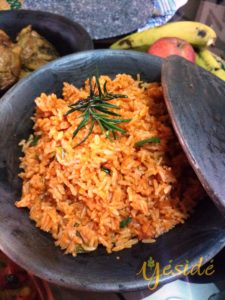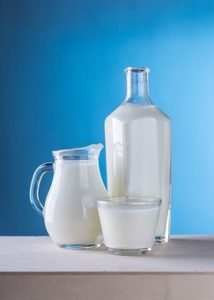
In one day (breakfast, lunch and dinner, snacks), you should eat foods from the following food groups:
Whole Grains, Roots And Tubers
Under this category, we have foods like rice, fufu, amala, acha, wheat, bread, sorghum, millet, pasta, garri,yam, and sweet potatoes.

This food group features on our plates at least once daily. It should feature on your plate every day because it is your major source of energy and if quality and diversity are involved, it should at least bring fibre to your plate if nothing else. The key is to think quantity, quality, diversity and safety when buying or planning what to eat.
Fruits And Vegetables (especially Vitamin A-rich fruits and vegetables)
They are important for vitamins, minerals, fibre and bioactive components they bring to the table, that are pretty much crucial for bodily function. A low intake of fruits and vegetable is a risk factor for poor health situations such as NCDS, vitamin and mineral deficiencies, obesity.

Under this category, we have those that are rich in vitamin A and those that are not. Vitamin A-rich fruits and vegetables include those that are yellow, red, purple, dark green in colour. For example, papaya, mango, carrots, red pepper, pumpkin, spinach, baobab (Kuka), Oha, bitter leaf, jute leaves (ewedu), fluted pumpkin leaves (Ugu).
Emphasis is on Vitamin A because of the huge Vitamin A deficiency problem we have in Nigeria and the problems associated with it (poor immunity, increased susceptibility to illnesses and diseases, poor sight, blindness and deficiencies of other vitamins linked to it).
Other types of fruits and vegetables include guava, pineapple, oranges, lemons, ripe bananas, golden melon, tamarind, apple, avocado pear, garden egg, okra, cabbage, cucumbers, and onions.
This does not feature every day or enough in most people’s diet. It should feature daily and in the right amount. The WHO organization recommends 400g/5 portions of fruits and vegetables. That is roughly 2 and a half cups of vegetables and 2 and a half portions of fruits (1 large mango, 1 large slice of pineapple).
If you don’t eat it as a part of your meals, you should eat it as snacks daily.
Legumes, Nuts and Seeds
Under this food category, we have cowpea (which we call beans), green peas, soybeans, pigeon pea, bambara groundnut, groundnuts, melon seed (egusi), Dika nut (Ogbono), cashew nuts.

This should be eaten regularly. This is important because of the fibre content, protein and other contents they bring to the table.
Eating ½ a cup of beans daily will give you significant amount of fibre, protein, folate, zinc, iron. At least every other day, you should include them in your meals. If we eat legumes every day (and give children too), it can help address undernutrition and it will help protect body from risk of diseases of the heart which is so common. Personally, every day (once a day) is better.
Flesh Foods (Meat, Fish, Eggs)
Under this category, you have your meat, fish, eggs, and other animal protein foods. These protein rich foods are very important for repairs, growth, metabolism and almost every function in the body.

For example, eating 2 large eggs per day will provide more than 20% of your protein needs, at least 30% of vitamin B2, 2/3 of vitamin B12.
If you eat 100g of cooked beef, it would provide you with one day’s vitamin B12 need, ½ day need for protein and zinc and brings iron, and other vitamins to the table.
Same thing with fish; It has a lot to bring to the table.
They should feature in every meal, every day.
Dairy
Under this category, we have milk, yoghurt, cheese, and other fermented milk.

Milk consumption is important especially for populations like ours that consume low amounts of fruits and vegetables. They are a good source of potassium that we get in fruits and they contain low sodium too (except for cheese). Milk also brings vitamin D, calcium and bioactive peptides to the table. Fermented milk that has not been pasteurized may be a good source of probiotics.
Although lactose intolerance may be high in our population, we need to consider ways to include milk daily in our diets as it is difficult to get enough calcium from meals that do not include dairy daily.

In a nutshell
Every plate you eat should contain at least whole grains, roots and tubers, fruits and vegetables, flesh foods.
Every day, at least one of your meals should contain legumes, nuts and seeds, and dairy
Use sugar and salt sparingly.
Many of these minerals, vitamins, macronutrients depend on one another to do their jobs effectively so it is important to abide by these recommendations and ensure that you include all these food groups on your plate in delicious ways.
Many times, we focus on not eating the bad things but in the process we are not eating enough of the good things. Avoiding the bad is good but eating the good that has proven benefits for your health is much better. Eat better and Live better.



Thank you Yeside. I learnt a lot from this post.
Please keep up the good work, God bless you.
Thanks Sis for taking the time to read it.